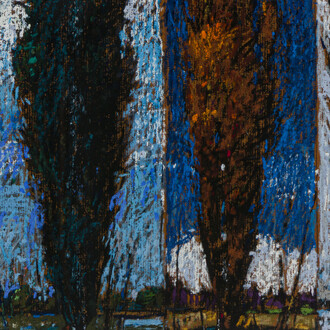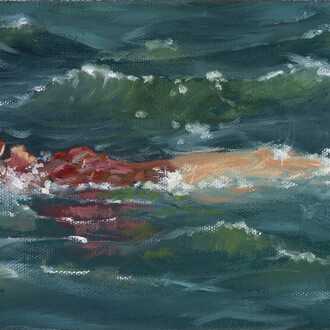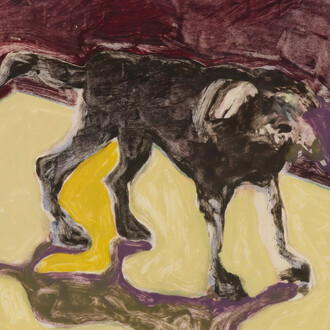Minol Araki (1928-2010) was an industrial designer and accomplished Japanese ink painter in the ancient literati tradition who was renowned for masterfully blending East Asian brush painting traditions.
The paintings of Minol Araki have been known in the United States since 1999 when the first large show of his work opened at the Phoenix Art Museum. That exhibition was presented at six other venues in the US and Asia. More recently, in 2017–2018, Araki’s work has been the subject of a series of exhibitions at the Minneapolis Institute of Art. Two New York galleries have recently shown his work. In the present exhibition, LewAllen Galleries offers more than twenty-five paintings by Minol Araki.
Born in 1928, in the Japanese colonial city called Dairen, a thriving Manchurian port city at the tip of the Liaodong peninsula, Araki grew up in a family with artistic interests and studied architecture at an academy in that city. However, with the end of World War II and the occupation of Dairen by the Soviets and the Chinese, he had to interrupt his studies and evacuate with his family to Japan. By 1947 he had resumed his architectural studies in Tokyo, and soon he began to pursue a design career.
Araki made his career in product design. He admired the work of Raymond Loewy (1893–1986), known for his designs of Studebaker autos and his Coca-Cola bottle. Araki designed housewares and electronics for Tandy Corporation/Radio Shack and other companies, work which took him frequently to Taiwan and the United States.
In the 1970s, Araki began to experiment with painting, an avocation that he kept separate from his career as a designer. In this, he revisited the Chinese scholar-painters, often called literati, who painted as an expressive outlet alongside their professional work. His employment of brush and ink in the time-honored Chinese manner was complemented by the study of European painting and led to an international style that could suit Eastern and Western viewers alike.
Araki produced large paintings, combining aspects of the Japanese folding or sliding screen with concepts of the Western format of the mural or wall painting. He accomplished this by constructing panels the size of a tatami mat, the module of Japanese flooring, and stretching a composition over two or more panels. Offered here by LewAllen Galleries are works in a smaller format. These are not studies and sketches but polished, finished paintings, with layering of pigments and textures.















